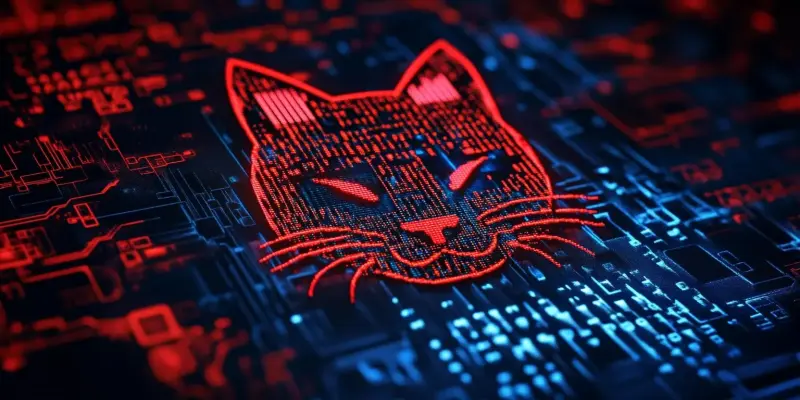The recent discovery of the CVE-2025-24813 vulnerability in Apache Tomcat has sent ripples through the cybersecurity community. This critical flaw allows attackers to achieve remote code execution (RCE) on compromised servers, posing a significant threat to organizations that rely on Apache Tomcat for web server management. CVE-2025-24813 impacts specific versions of Apache Tomcat: 9.0.0-M1 to 9.0.98, 10.1.0-M1 to 10.1.34, and 11.0.0-M1 to 11.0.2. The vulnerability has been addressed in patched releases 9.0.99, 10.1.35, and 11.0.3, yet awareness and action are crucial steps to mitigating the risk.
Understanding the Vulnerability
The flaw in Apache Tomcat lies in its handling of partial PUT requests and path equivalence. An attacker can bypass security constraints by sending a PUT request with a maliciously crafted serialized Java payload. This payload is then triggered by a subsequent GET request with a specially crafted “JSESSIONID” cookie, leading to deserialization and remote code execution. Although the vulnerability requires specific conditions to be exploited successfully, the potential consequences are severe.
Exploitation necessitates that the default servlet has write permissions, supports partial PUT requests, and leverages file-based session persistence alongside a deserialization-vulnerable library. These configurations are not typically enabled by default, mitigating the likelihood of a successful attack to some extent. Nonetheless, reports of global exploitation attempts, particularly in countries like the United States, Japan, India, South Korea, and Mexico, underscore the need for vigilance.
Mitigation and Defense Strategies
To defend against CVE-2025-24813, organizations should prioritize updating their Apache Tomcat installations to the latest patched versions—9.0.99, 10.1.35, and 11.0.3. This immediate measure addresses the core vulnerability and prevents potential exploitation. If an immediate upgrade is impractical, temporary protection can be achieved by implementing network-level restrictions to limit access to the Tomcat server.
Enhancing security measures further involves disabling unnecessary HTTP methods and enforcing stringent access controls. Such steps restrict the attack surface and reduce the risk of unauthorized code execution. Monitoring threat indicators and employing web application firewalls (WAFs) are additional strategies that can help detect and block suspicious activities, providing an additional layer of defense.
Conclusion: The Path Forward
The recent identification of the CVE-2025-24813 vulnerability in Apache Tomcat has caused a stir across the cybersecurity community. This serious flaw enables attackers to carry out remote code execution (RCE) on compromised servers, presenting a considerable threat to organizations that depend on Apache Tomcat for their web server operations. Affected versions include Apache Tomcat 9.0.0-M1 to 9.0.98, 10.1.0-M1 to 10.1.34, and 11.0.0-M1 to 11.0.2. Fortunately, the vulnerability has been fixed in the patched versions 9.0.99, 10.1.35, and 11.0.3. Nonetheless, it is crucial for organizations to be aware of this issue and take prompt action to mitigate the risks associated with it. Ignorance or delay in response could expose critical systems to potential attacks, leading to severe data breaches or operational disruptions. It is essential for IT departments to ensure their servers are updated to the latest secure versions and continuously monitor for any unusual activities that could indicate attempted exploits.

